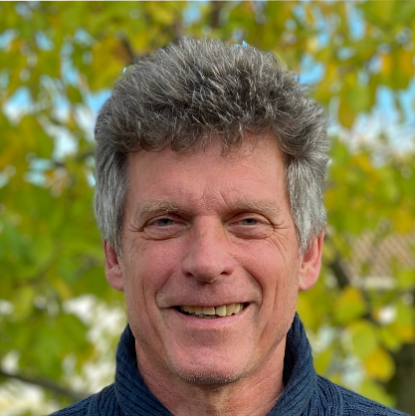Microorganism interaction (Cell, Virus and Bacteria) with CNTs and metal oxides
Carbon nanomaterials represent interesting study objects to examine the effects of hydrophobicity and hydrophilicity on biofilm formation, e.g. in designed flow chambers. They can inhibit biofilm formation on human pathogens due to such interactions. On the other hand, CNTs display a biointeractive surface on which heart cells and nerve cells can be grown. Cortical neurons develop communication pathways via neurites either on VACNTs or on randomly deposited CNTs. Currently research into carbon nanomaterials spans a wide field of specific interaction with respect to intracordial recording and microstimulation. 1 D CNTs as well 2D graphene materials with their high electrical conductivity, chemical robustness, biocompatibility and electrochemical stability are well suited to expand their material properties into such areas. Graphene provides a biocompatible coating for common electrode materials e.g. gold and improves the electrode properties.
In the realm of engineered nanostructured virus/metal oxide hybrid materials we have studied bio-inspired mineralisation processes and chimie-douce routes to functional metal oxides employing metal coordination compounds. Both approaches allow the setup of FET devices which are electronically functional already under ambient conditions.
See our contributions:
- B. Körbitzer, P. Krauss, J. J. Schneider, C. Thielemann “Transparent graphene microelectrodes for recording and stimulation of neuronal cells”, ChemNanoMat, (2019), 5, 427-435, https://doi.org/10.1002/cnma.201800652
- P. Atanasova, R.C. Hoffmann, S. Stitz, S. Sanctis, Z. Burghard, J. Bill, J.J. Schneider, S. Eiben “Engineered nanostructured virus ZnO hybrid materials with dedicated electronic and mechanical properties”, Bioinspired, Biomim. Nanobiomaterials, (2018), 8, 2-15, https://doi.org/10.1680/jbibn.18.00006
- J.J. Schneider “Vertically Aligned Carbon Nanotubes as Platform for Biomimetically Inspired Mechanical Sensing, Bioactive Surfaces, and Electrical Cell Interfacing”, Adv. Biosys., (2017), 1, 8, 1700101
- G. Goebel, M.L. Beltran, J. Mundhenk, T. Heinlein, J. J. Schneider, F. Lisdat “Operation of a carbon nanotubes based glucose/oxygen biofuel cell in human body liquids – performance factors and characteristics”, Electrochim. Acta , (2016), 218, 278-284
- I. Malek, C. F. Schaber, T. Heinlein, J. J. Schneider, S. N. Gorb, R. A. Schmitz “Vertically aligned multi walled carbon nanotubes prevent biofilm formation of various medically relevant bacteria”, J. Mater. Chem. B , (2016), 4, 5228-5235
- O. Yilmazoglu, S. Yadav, D. Cicik, J.J. Schneider “A nano-microstructured artificial hair cell type sensor based on topologically graded 3D carbon nanotube bundles”, Nanotechnology, (2016), 27, 365502
- B. Koerbitzer, P. Krauss, C. Nick, J. J. Schneider, C. Thielemann “Substrate effects on graphene electrodes for stimulation of neuronal cells”, 2 D Mater., (2016), 3, 024004
- P. Atanasova, N. Stitz, S. Sanctis, J. H. M. Maurer, R. C. Hoffmann, S. Eiben, H. Jeske, J. J. Schneider, J. Bill “Genetically driven assembly of tobacco mosaic viruses towards generation of nanostructured semiconducting bio/inorganic hybrids”, Langmuir, (2015), 31, 3897-3903
- S. Sanctis, R. C. Hoffmann, S. Eiben, J. J. Schneider “Microwave assisted synthesis of a zinc oxide tobacco mosaic virus hybrid as active semiconductor material in a field-effect transistor”, Beilstein J. Nanotechnol. , (2015), 6, 785-791
- C. Nick, S. Yadav, R. Joshi, J.J. Schneider, C. Thielemann “Growth of Cortical Neurons Grown on Randomly Oriented and Vertically Aligned Dense Carbon Nanotube Networks”, Beilstein J. Nanotechnol. , (2014), 5, 1575-1579
- C. Nick, R. Joshi, J. J. Schneider, C. Thielemann “Three-Dimensional Carbon Nanotube Electrodes for Extracellular Recording of Cardiac Myocytes”, Biointerphases, (2012), 7, 58
- C. Nick, R. Joshi, J. J. Schneider, C. Thielemann “Three-Dimensional Carbon Nanotube Electrodes for Extracellular Recording of Cardiac Myocytes”, Biointerphases, (2012), 7, 58
- P. Atanasova, D. Rothenstein, J. J. Schneider, R. C. Hoffmann, S. Dilfer, S. Eiben, C. Wege, H. Jeske, J. Bill “Virus-Templated Synthesis of ZnO Nanostructures and Formation of Field-Effect Transistors”, Adv. Mater., (2011), 23, 4918–492



